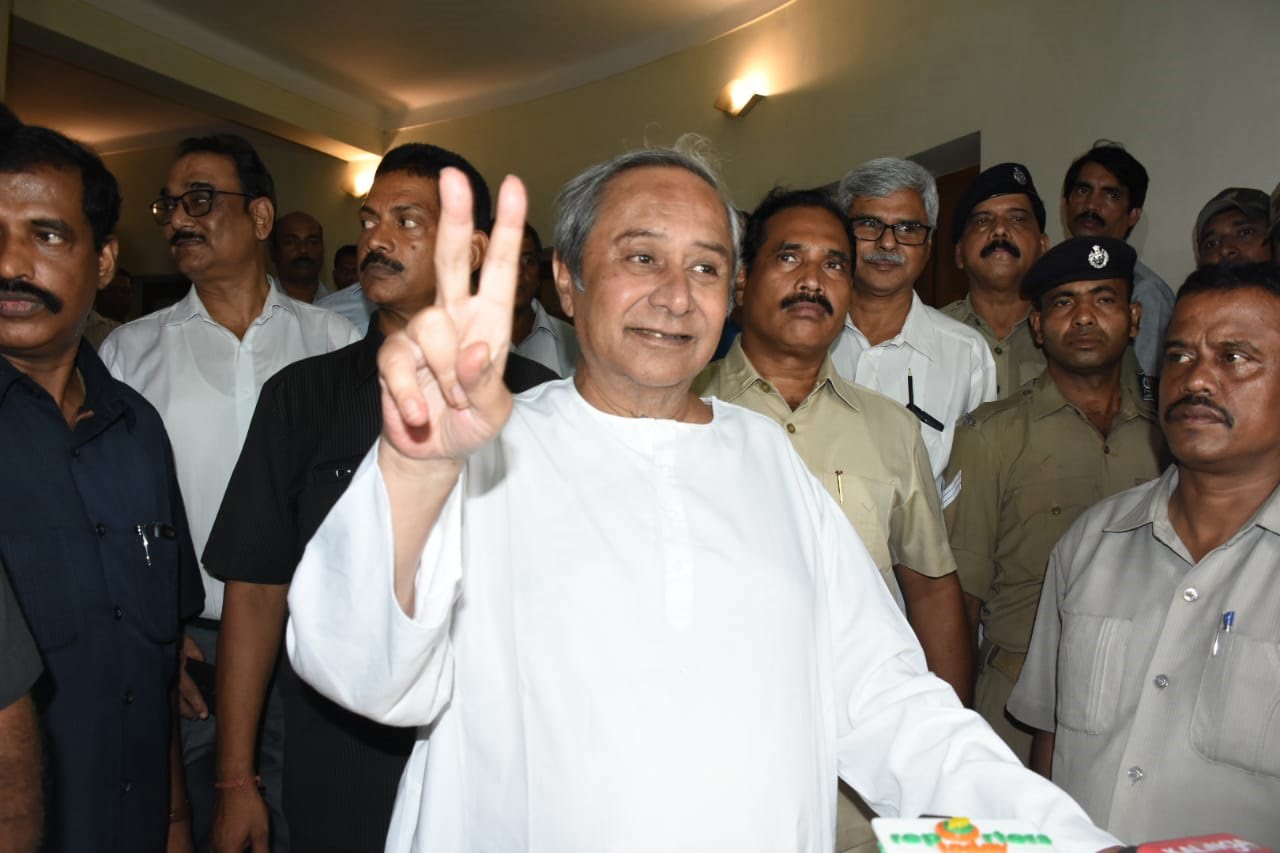Ten Reasons Why Naveen Continues To Rule

Bhubaneswar: Notwithstanding the Modi Magic casting its spell on the entire country for the second successive time, it failed to wow majority of Odisha’s 3.24 crore electorate. And the reason arguably is none other than Naveen Patnaik, who has successfully stopped the saffron surge twice and won for himself a fifth consecutive term in office. But what is it that makes the Biju Janata Dal president click?
Naveen, for the record, is yet to lose an election ever since he took the political plunge in 1997, following the death of his legendary father and Odisha’s former Chief Minister Biju Patnaik. In fact, his fortunes have soared since he, along with some other former Janata Dal leaders, founded the BJD in December, 1997, winning election after election and strengthening his hold over the regional party and the eastern state.
While his previous electoral triumphs were more or less foregone conclusions even before voting day had arrived, Elections 2019 was certainly not the same. For the first time in his over two-decades-old career, Naveen was up against a tough opponent in the BJP, which, boosted by virtue of being in power at the Centre, had the resources and motivation to upset the BJD’s applecart.
Some predicted that Naveen would get a thin majority while others had started talking of a fractured mandate. There were still others, obviously pro-BJP in their political leanings, who were optimistic of the saffron party forming the government in Odisha. Well, Naveen has silenced his critics and doomsayers by registering an overwhelming victory.
Why then did the voters prefer a septuagenarian Naveen for a record fifth term, despite a spirited challenge from the BJP? As Naveen braces up to take fresh guard, let’s take a look at 10 plausible reasons behind his uninterrupted success:
- Pro-Incumbency: If Narendra Modi would like us to believe that pro-incumbency worked for him and his party, then it surely did the trick for Naveen and Co. as well. A slew of development programmes, sops and doles, combined with effective implementation of certain flagship schemes like “Ama Gaon Ama Bikash”, “Biju Swasthya Kalyan Yojana” and “Kalia” brought in a “feel-good” factor, prompting the chief minister to even sell his “apana khusi tah (Are you happy?)” remark with abandon.
- Stability & Status Quoism: People of Odisha are, to a large extent, status quoists and do not embrace change easily. With the electorate used to the BJD dispensation since March 2000, a new party in power was possibly not to their liking. Moreover, the public has tasted the benefits of a stable political dispensation for the past two decades and possible didn’t want to do away with it.
- Clean Image: Despite being in power for long, Naveen has succeeded in maintaining the Mr Teflon image with the taint hurled by opponents not sticking to his white pyjamas. The perception that he doesn’t encourage corruption and nepotism continues to impress the public.
- TINA Factor: There can be no denying the fact that he stands head and shoulders above all political leaders in Odisha in terms of stature and popularity. This certainly counts for a lot when voters see there-is-no-alternative on the political horizon.
- Better Organisation: On the ground, BJD’s strength is certainly superior compared to its rivals, the BJP and the Congress. Apart from the obvious benefits of being in power for over 19 years, the regional party has, over the years, built a well-oiled organisational apparatus and even poached quite a few strong leaders from the Opposition camps. Little wonder, it had the wherewithal to stop the Modi March.
- Detailed Planning & Effective Implementation: The BJD has put in place an effective monitoring mechanism, through which it keeps assessing its strengths and weaknesses at regular intervals through feedbacks and surveys. This has aided the party to plan better and, more importantly, execute those with precision. Tickets, for example, are distributed after undertaking multiple surveys, which help the party gauge the winnability of its candidates better.
- Regional Sentiments & Central Neglect: The BJD, undoubtedly, has cashed in on regional sentiments and made central neglect its principal political weapon against the national parties, the BJP and the Congress. Its policy of maintaining equidistance from the NDA and the UPA since 2009, when it severed its 11-year-old alliance with the BJP, has allowed it much-needed room for political manoeuvrability while handling contentious issues and helped it score brownie points over its rivals.
- Massive Propaganda: Unlike the 2000, 2004 and 2009 polls, BJD has since 2014 engaged in massive publicity. The ruling dispensation stepped it up, especially after its less-than-expected success in the 2017 panchayat polls, leaving no stone unturned in branding schemes and reaching out to the masses.
- Weak Opposition: The Opposition has failed to muster enough strength to take on the BJD’s might. While the Congress, perpetually a divided house, could never match up to Naveen since 2000, thereby allowing him to grow and consolidate, the BJP played second fiddle to the BJD till 2009 and is still weak in several districts. The saffron outfit, for the first time, threw a tough challenge, but failed to live up to expectations.
- Last Hurray: With age not on Naveen’s side, many BJD workers and sympathisers believe this could be their leader’s last effective stint in office (media has been speculating about the possible entry of his nephew Arun to don the BJD mantle). This perhaps spurred the electorate to allow Naveen his last hurray!

Comments are closed.